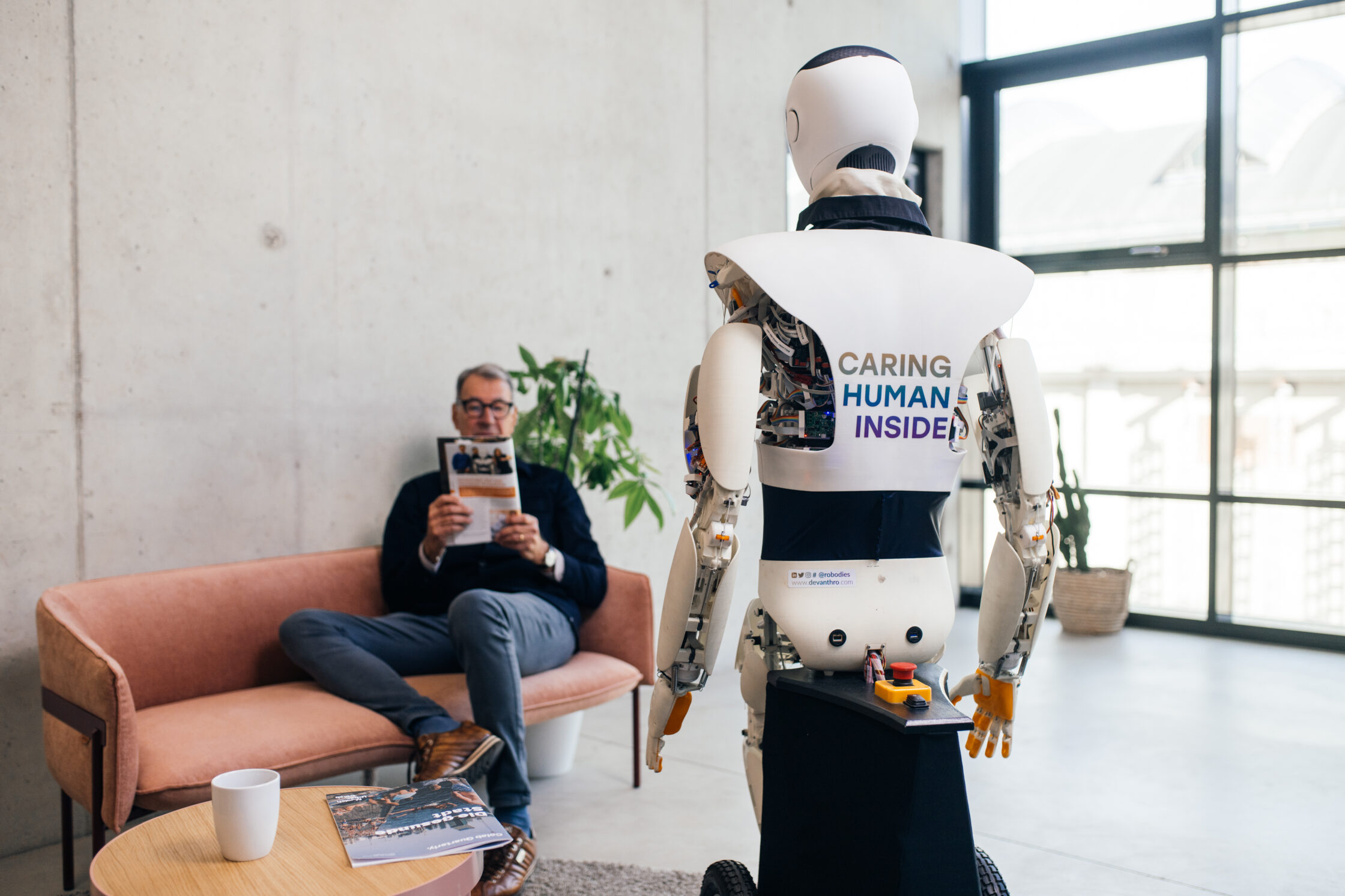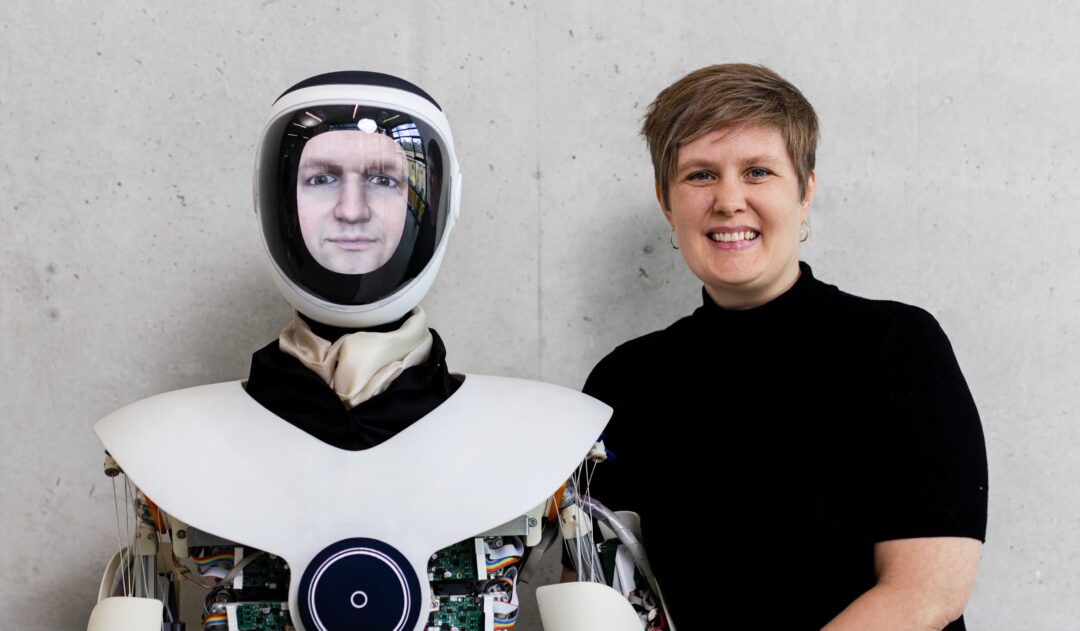Robodies Will Scale the Care Market. This is Why.
by Rafael Hostettler
Are there not better, industrial use cases for Robodies? Is care not a difficult market? The answers to both questions is “no, not if you think about it the right way”. The care market seems inevitable to scale Robodies. This is why.
Looking at the 5 frameworks laid out in NFX’s article “The Hidden Pattern of Great Startup Ideas”, Devanthro is nailing all five:
- Innovate just enough
- Leverage the technological shifts
- Take more risks
- Solving a problem vs. creating an opportunity
- Market risk vs. execution risk
Innovate just enough
How could we possibly fit this category? Robodies are a completely novel technology after all, and the framework is to change just one thing from an existing offering. The single thing we are changing is that live-in caregivers (a proven market where demand is quickly outgrowing supply) can now work remotely.
That is why we keep the pricing a monthly fee. That is why we collaborate with care services, to do the things that are too complex for Robodies – because we have observed this interaction between live-in caregivers and ambulatory caregivers many times. Our service is live-in caregivers, but remote.
Leverage the technological shifts
This one is obvious. We are building on top of at least 3 major shifts; increasingly robust global internet coverage, progress in quasi-direct drive (QDD) actuators, and VR headsets with internal cameras pointing at the operator’s face.
Especially with 5G, we can guarantees latency and bandwidth, ensuring that Robodies will work even in situations where a disconnect would be dangerous.
The QDDs allow us to build safe yet strong actuation, ensuring Robodies are safe to be around but still strong enough to do the work.
And the Meta Quest Pro and soon the Apple Vision Pro allow us to drive realistic avatar faces despite the person wearing a headset. The impact of this can be easily seen in this interview between Mark Zuckerberg and Lex Friedman.
Take more risks
“Most people didn’t think they looked like good ideas at the beginning” – easy. Look at the flurry of humanoid robots and yet every time we talk about how we are building an avatar first and not a robot, we get incredulous stares: “So you always need a human on the other side?” – Yes. And that is actually a great idea!
While we’re obviously not against AI, and leverage it at many places in our product, making a robot act autonomously in homes is science fiction.
Despite recent progress in control, homes are delicate places and we cannot afford an accident where an autonomous robot inadvertently breaks an expensive vase – or worse. Good luck certifying such a product as safe and selling it at scale.
Even if you wanted to go into homes with robots, you will need training data, because each home is unique. Data you will not get if you do not already have a product in a home. (And sorry, but the map of your home from your Roomba is mostly worthless in that regard.) You would need thousands of hours of humans operating remote robots in homes to collect that amount of data – sounds familiar?
But there is more. Care is the one market where having a human on the other side has real value. Robots to control pressure gauges on oil platforms – nobody cares how they look – but we all want a human, a real person, to care for us! And finally, Robodies are somewhat complex products, so it would be great if we could really have a lot of time to focus on our customer service to get it exactly right.
Solving a problem vs. creating an opportunity
The problem we are solving is easily defined: shortage of care giving staff in home care. But what are the opportunities we are creating? In care, there are many additional services that could be delivered through Robodies, such as ergo therapy, physio therapy or doctor home visits. But imagine a Robody in every home? A robotic body waiting to be embodied by a human or an AI.
In fact, it is a general physical work and communications platform. Who said repairing the washing machine, cooking a 5-star meal or baby sitting could not be done through a Robody?
And further in the future, Robodies will leave homes and work everywhere on the planet. A quick trip to Tokyo? Or a walk on the beach for a person too frail to leave the house? The opportunities are truly endless – but they start with a place where the value created is very clear and tangible: a live-in caregiver starts at 2800€ per month and there are an estimated 400’000 – 600’000 in Germany alone, all paid privately.
Market risk vs. execution risk
“Market risk is when you don’t know if anyone will want what you are building. Execution risk is when you don’t know if you can execute at a world-class level on the idea.” – this is where care (sadly) truly shines. When care services reject 60% of the requested work because their staff are already burning out working 18 hour shifts, when ending up on a waiting list is considered “lucky” and almost 10% of people in care homes are continuously sedated, there is no question if anyone wants what we are building. (That being said, we are testing as much and as early as we can, and so far everyone we tested with was excited about Robody Cares.)
While we have iterated for years now, bootstrapping through the pandemic and thereby proving our resilience, we understand the complexity of what is to come, which is why the financing round we are raising is not just about the money needed to bring the first Robodies into homes, but just as importantly about the experience of the investors as entrepreneurs in fields summarily covering our journey from today, over caring Robodies to Robodies in every home.
Into every home and beyond…
There are many further aspects underpinning our conviction that care is a great market to start in. Like the fact that Robodies move slowly initially (as this is also in the interest of our customer group), or that first versions do not need legs (as a significant part of our customer group lives in wheelchair accessible flats), or that we can define a broad offering “Robody Cares” that caters to the natural continuum of customers we can accept as the capabilities of the Robodies grow. Or that sales cycles can be super fast, because we are entering at moment in the life of our end users where they are forced to take a decision quickly and we do not depend on third parties with a corporate decision structure to deploy – to just name a few.
Devanthro is a Munich-based robotics and AI business, building Robodies – robotic avatars for the elderly care market. Their partners include Charité Berlin, University of Oxford, and Diakonie. An early prototype is part of the permanent exhibition at Deutsches Museum in Munich. For more information, please visit https://devanthro.com/.



